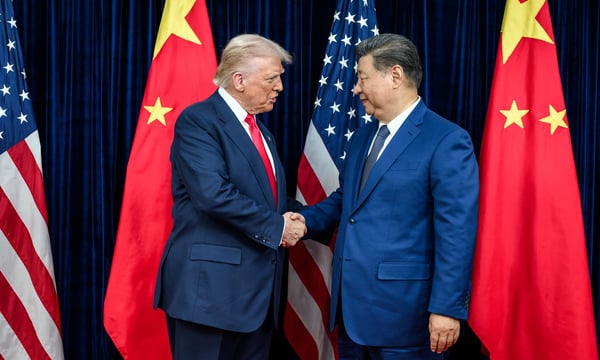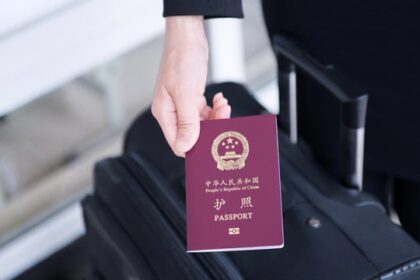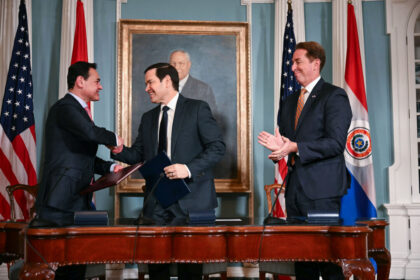On October 30, Presidents Donald Trump and Xi Jinping held a closely watched meeting in South Korea. Ahead of the talks, Trump posted on Truth Social to say “THE G2 WILL BE CONVENING SHORTLY!” That seemingly offhand remark carries heavy historical baggage. It signals the return – at least rhetorically – of an idea once proposed and dismissed by both Washington and Beijing: a China-U.S. “Group of Two” running global affairs together.
The G-2 concept has had an unusual trajectory. It first emerged in the depths of the 2008 financial crisis, when U.S. and European policymakers, desperate for stability, called on Beijing to shoulder greater responsibility for rescuing the global economy. With the U.S. financial system in turmoil, only China had the resources to serve as a counterweight. Intellectuals and officials floated the notion of a “G-2”: Washington and Beijing as joint stewards of the global order. The idea implied that these two giants, and only these two, could stabilize the financial system and co-govern global affairs.
China, however, was not interested. Guided by the principle of taoguang yanghui – keeping a low profile – Beijing at that time was wary of global leadership. Its focus remained domestic: sustaining rapid development, maintaining social stability, and avoiding burdensome external commitments. Then-Premier Wen Jiabao made the rejection explicit. “Some say that world affairs will be managed solely by China and the United States. I think that view is baseless and wrong,” Wen declared in 2009. “It is impossible for a couple of countries or a group of big powers to resolve all global issues. Multipolarization and multilateralism represent the larger trend and the will of people.”
For Beijing, accepting the G-2 label risked strategic overexposure and ran counter to its cautious diplomatic instincts. Washington, too, was hesitant, for different reasons: treating China as an equal partner risked elevating its global standing too quickly. The G-2, then, was a Western fantasy rather than a joint project.
That picture changed under Xi Jinping, who came to power in 2012 and gradually abandoned Deng Xiaoping’s cautionary maxim. Xi projected a China that was no longer content to be a rule-taker but eager to shape global governance. His proposal of a “new type of great power relations” was effectively Beijing’s own G-2-like concept. It suggested that the United States and China should treat each other as equals, avoid confrontation, and work together to stabilize international order. As I and Shaun Breslin have argued, this formula was essentially a G-2 with Chinese characteristics.
But Washington was uninterested. The Obama administration was reluctant to embrace language that implied parity between the United States and China, preferring to cast Beijing as a “responsible stakeholder” in a U.S.-led order rather than a co-manager. Without American endorsement, Xi’s idea withered, quietly dropping from China’s diplomatic vocabulary.
By the late 2010s, the very notion of a G-2 seemed obsolete. Relations deteriorated rapidly under Trump’s first presidency and worsened further during the Biden years. The U.S. framed China as its primary strategic rival, restricting technology flows, fortifying alliances in Asia, and warning against Beijing’s ambitions. Beijing, for its part, pushed ahead with the Belt and Road Initiative, deepened ties with Russia, and emphasized its own global initiatives such as the Global Development and Global Security frameworks. Mutual suspicion dominated. Far from contemplating shared leadership, the two powers looked locked in a long-term rivalry.
Against this backdrop, Trump’s revival of the G-2 language in 2025 is remarkable. As president again, Trump has never hidden his transactional instincts. Branding his meeting with Xi as a “G-2” encounter signals, at minimum, recognition of China as a co-equal. It suggests a desire – however vague – for a bilateral arrangement in which Washington and Beijing manage world affairs together. For Beijing, this is music to Xi’s ears. Unlike in 2008, when China shied away from global leadership, Xi today embraces it. Being recognized by Trump as part of a G-2 would be a symbolic validation of China’s great power status, something the Chinese leadership has long craved.
Still, the context of 2025 makes the G-2 idea more complicated than ever. The balance of power has shifted. China’s economy is far larger and more technologically advanced than when the concept was first floated, and its military modernization has significantly narrowed the gap with the United States. The U.S., meanwhile, is more divided at home, with bipartisan consensus still casting China primarily as a threat rather than a partner. Trump’s rhetorical G-2 does not reflect Washington as a whole; it reflects Trump’s political instincts, which may not endure beyond his administration.
Meanwhile, the world itself has changed. Multipolarity, once aspirational, is now a reality. The European Union, India, and middle powers from Brazil to Turkiye all demand recognition. A duopoly of Washington and Beijing appears less plausible in this more diffuse global order.
Does this mean Trump’s G-2 remark is meaningless? Not quite. Words in diplomacy matter. By invoking the G-2, Trump has opened a symbolic door, acknowledging Beijing’s parity in ways previous U.S. leaders avoided. For Xi, that alone is a diplomatic win, reinforcing the narrative that China has finally achieved equal status with the United States. For Washington’s allies, however, the signal may be unsettling. Asian partners like Japan and South Korea, or European allies already wary of U.S. reliability, may fear that their voices could be sidelined in a bilateral condominium. For Washington’s critics, Trump’s G-2 language could look like a dangerous concession; for Beijing, it may embolden ambitions without requiring reciprocal compromises.
The Trump-Xi meeting therefore revives the ghost of an idea that has haunted China-U.S. relations for nearly two decades. From its birth in the financial crisis, to its rejection by Wen Jiabao, to its repackaging by Xi Jinping, to its apparent demise amid intensifying rivalry, the G-2 has long been a symbol of the uneasy search for a framework to manage the world’s most consequential relationship. Trump’s decision to bring the term back into public discourse reflects a very different balance of power than in 2008. Back then, neither side was ready to embrace the G-2. Today, both leaders appear rhetorically open to it, albeit for their own reasons.
Whether this leads to genuine cooperation or simply more disillusionment remains to be seen. What is clear is that the G-2 idea, once dismissed as unrealistic, has returned to the conversation. Its reappearance underscores the paradox of China-U.S. relations: locked in rivalry yet unable to escape the gravitational pull of potential partnership. The world, watching closely, must now ask whether the ghost of the G-2 is merely a rhetorical flourish or the early sign of a reshaped global order.






